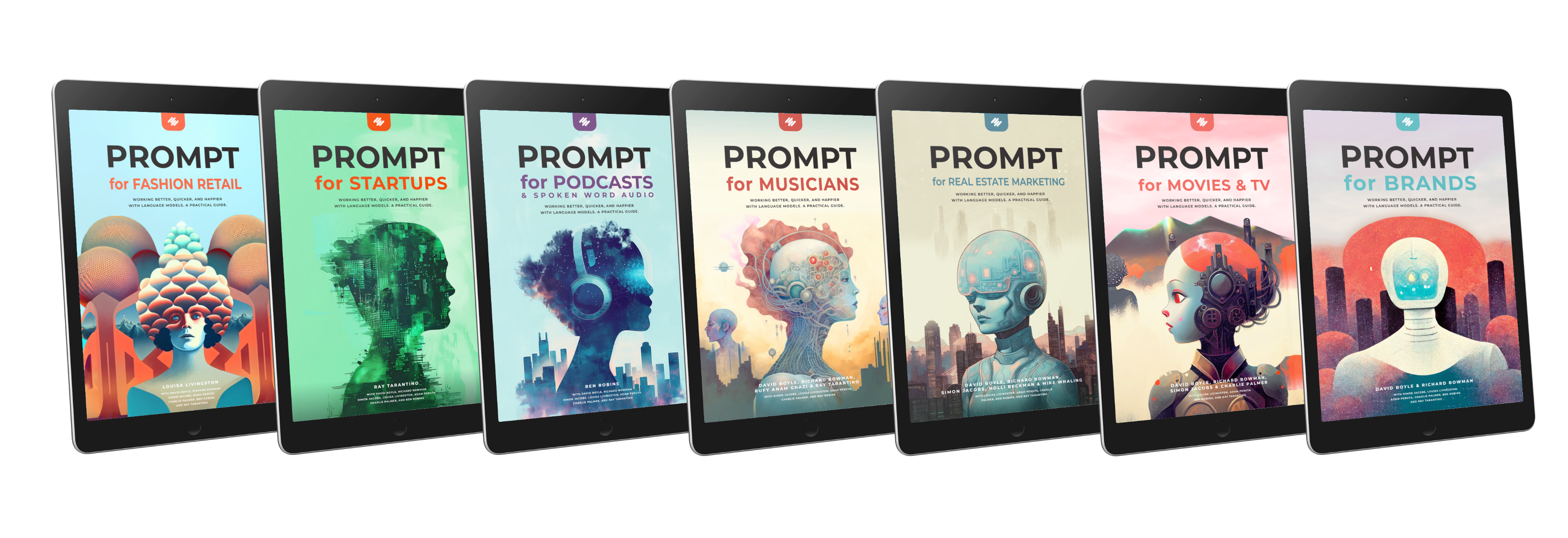On Wednesday 13th December 2023, Team PROMPT hosted a Zoom call, bringing together a diverse group of professionals from some of the world's largest companies in industries including retail, finance, technology, market research, consumer goods, pharmaceuticals, and publishing. This session, held under the Chatham House Rule, facilitated an open and honest exchange of experiences and challenges in AI adoption and utilisation. Participants, all trained by us on ChatGPT over the past year, shared insights from their respective sectors, contributing to a discussion that ranged from identifying the stages of AI adoption to co-creating practical solutions.
Below is a quick overview that shares what we learned while respecting the Chatham House Rule. The full version is here: https://docs.google.com/document/d/1g1Vx-RtFSCwZhJVXWpgYJqym6m_PfPdiiQtf-4c9AkQ/edit
Contents
- The six phases of adoption
- Overall themes form the call
- 10 barriers people are facing
- Ideas to drive adoption
Quick overview
🌍 The Six Phases of Adoption
- Phase 1: Skepticism and Hesitation: Initial doubts about AI's efficacy and practicality, often due to previous overhyped technologies.
- Phase 2: Initial Exposure and Surprise: First real exposure to AI, marked by surprise and realization of its potential in one's domain.
- Phase 3: Experimentation and Trial: Small-scale experimentation to understand AI’s capabilities and how it fits into existing workflows.
- Phase 4: Realising Practical Applications: Recognition of AI's role in enhancing creativity and decision-making, leading to effective interaction for optimal results.
- Phase 5: Adoption and Integration: Standard integration of AI into everyday processes, becoming an essential tool.
- Phase 6: Evolution and Learning: Continuous learning and adaptation as AI tools evolve.
Most teams are transitioning from surprise to recognizing AI's practical applications, indicating a shift from curiosity to focused exploration. The absence of teams in the last two phases suggests emerging but not mature AI integration.
📘 Overall Themes from the Call
- Regulation and Restriction: Cautious use in regulated industries like banking due to security and compliance concerns.
- Encouragement in Less Regulated Sectors: Active encouragement in sectors like tech, with some companies offering ChatGPT subscriptions.
- Role-Dependent Adoption: Varied acceptance across roles, with creative roles being more receptive than accuracy-focused ones.
- New Employee Adoption and Productivity: LMs can significantly increase productivity among new employees.
- Educational Sector's Response: Slow adaptation in universities, with mixed feelings among students.
- Internal Tools vs. ChatGPT: Trend of creating internal tools, but they often lack the sophistication of tools like ChatGPT.
- Cultural Shifts and Resistance: Varied reactions based on age and experience, with younger employees being more adaptable.
- Strategies for Adoption: Various strategies are employed, including segmenting staff readiness, leadership support, creating guidelines, and promoting fun with LMs.
- Barriers to Adoption: Identified barriers include lack of understanding, security concerns, fear of job displacement, and resistance to change.
- Potential for Organisational Change: Recognized need for a cultural shift to leverage LMs fully.
🚧 10 Barriers People Are Facing
- Regulatory Hurdles: Compliance requirements in regulated industries.
- Cultural Resistance: Fear and scepticism among experienced employees.
- Accuracy Concerns: Hesitation in precision-critical roles.
- Lack of Awareness: Limited understanding of LMs' potential.
- Internal Tool Limitations: Less capable internal tools compared to public ones.
- Educational Inertia: Slow adaptation in the education sector.
- Segmentation Challenge: Customizing adoption strategies based on readiness.
- Leadership Buy-In: Need for top-level support for cultural change.
- Technological Reluctance: Comfort with existing processes and fear of new technologies.
- Security Concerns: Preference for secure internal solutions.
🛠️ Ideas to Drive Adoption
- AI Exploration Sessions: Hands-on sessions for team members to explore AI tools.
- Role-Specific AI Integration: Tailor AI tool use to specific roles.
- New Employee AI Onboarding: Include AI tool training in the onboarding process.
- Internal AI Tool Development: Encourage development of company-specific AI tools.
- AI Success Case Studies: Share stories of successful AI implementations.
- Regular AI Tech Talks: Discussions on latest AI developments.
- Cross-Functional AI Collaboration: Encourage cross-departmental use of AI tools.
- AI Mentorship Circles: Pair AI-experienced employees with newcomers.
- Tailored PROMPT for Your Organization: Customise PROMPT to fit organizational context.
The full version of our notes is here: https://docs.google.com/document/d/1g1Vx-RtFSCwZhJVXWpgYJqym6m_PfPdiiQtf-4c9AkQ/edit

